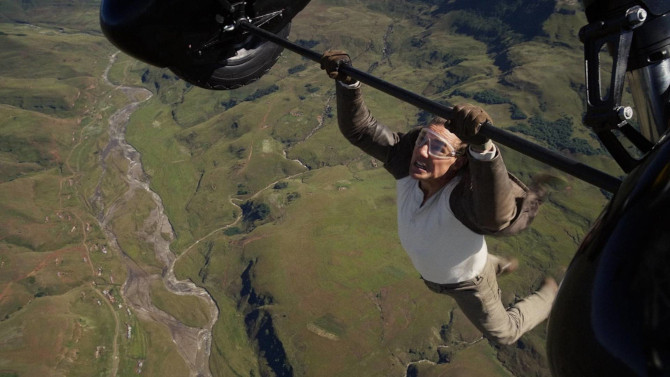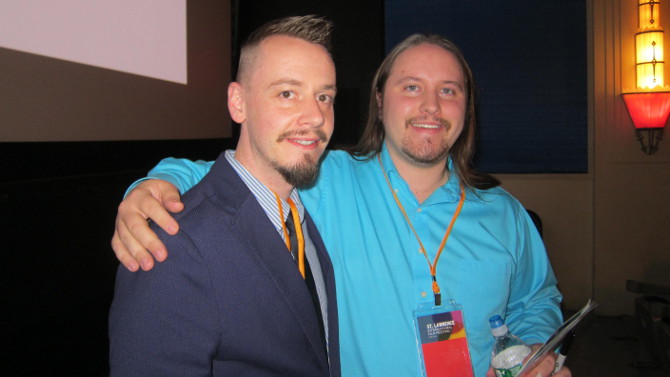
An Impossible Mission
How do you wrap up a franchise like Mission: Impossible? That is, if this even is the final installment... as they’ve made it sound (while at the same time, stars not named ‘Tom Cruise’ pipe up and suggest that might not be so). It has been twenty-nine years, with different writers and visionary directors – from twisty Brian De Palma and the action hair stylings of John Woo, to the lens flares of J.J. Abrams and animation expert Brad Bird, it was only about ten years ago that the franchise decided to opt for The Usual Suspects scribe Christopher McQuarrie for the final four. To return to that opening question once more, you could end with a Sopranos’ style cliffhanger, simply make another entertaining movie like the many before – like Everybody Loves Raymond did it with its final episode, or try to tie everything up in a neat little bow by bringing everything together as the Daniel Craig era did with James Bond. Well, it is definitely more along the lines of the latter example, with some distinct differences.
-

Rag-Tag Team Rocks Through the Galaxy
Guardians of the GalaxyJanuary 8, 2016The anti-hero, who can be described as a vital character that lacks typical heroic qualities, has been a staple of both film and television over the past several years. Actors like Hugh Laurie, who created the iconic game-playing character House and Johnny Depp, who modelled his likeable yet sketchy pirate Jack Sparrow after Keith Richards, are just two examples of the moral ambiguity that comes with many a character nowadays. Perhaps a recent film that best exemplifies this term is when a group of rag-tag criminals come together to save multiple worlds in Marvel’s 2014 space action adventure flick Guardians of the Galaxy.
-

Where the Limelight Never Fades
LimelightJanuary 5, 2016There may not be a man who better exemplifies the heights in which one can rise and then fall than the legendary Charlie Chaplin. The British immigrant perfectly illustrates the ‘American Dream’. He started as a vaudeville performer, then became a silent film star – he had already signed a million dollar contract in the 1910's. By early 1919, he had formed United Artists with partners Douglas Fairbanks, Mary Pickford and D.W. Griffith – giving him control over the quality of his beloved product.
-

The Nostalgia is Strong With This One
Star Wars: The Force AwakensJanuary 3, 2016Star Wars: The Force Awakens has taken the world by storm. Before I wrote this review, I wanted to watch the film for a second time in a theatre – this time, in 2D, yet it was sold out more than two weeks after its opening night.
-
Star Pick with Nathan Andrew Jacobs
 WANTED Someone to Go Back in Time With MeSafety Not GuaranteedJanuary 1, 2016
WANTED Someone to Go Back in Time With MeSafety Not GuaranteedJanuary 1, 2016Sometimes it is not easy to qualify exactly what genre a movie is. Safety Not Guaranteed is one of those films. The 2012 picture was recommended to me by Nathan Andrew Jacobs, the writer/director of the independent film Killing Poe, who stated that it was an excellent Indie film that should be seen by more people.
-
Star Pick with Nathan Andrew Jacobs
 Sometimes Less is MoreRushmoreDecember 30, 2015
Sometimes Less is MoreRushmoreDecember 30, 2015Nathan Andrew Jacobs, the writer/director of the independent film Killing Poe, spoke to me at the St. Lawrence International Film Festival back in October. According to him, his film, which built up an unbelievable buzz over the four day festival, has been influenced by the work of Wes Anderson. He mentioned two of Anderson’s movies – The Royal Tenenbaums and Rushmore as being his favourites, and the latter will be reviewed here today.
-
Star Pick with Joe Kraemer
 Take a Return Journey to a Galaxy Far, Far AwayStar Wars: Episode IV - A New HopeDecember 27, 2015
Take a Return Journey to a Galaxy Far, Far AwayStar Wars: Episode IV - A New HopeDecember 27, 2015Star Wars is the talk of the town once again. Episode 7, entitled The Force Awakens is sweeping the box office by storm. So, perhaps it is wise to return to the year 1977 to look at the first film: A New Hope.



